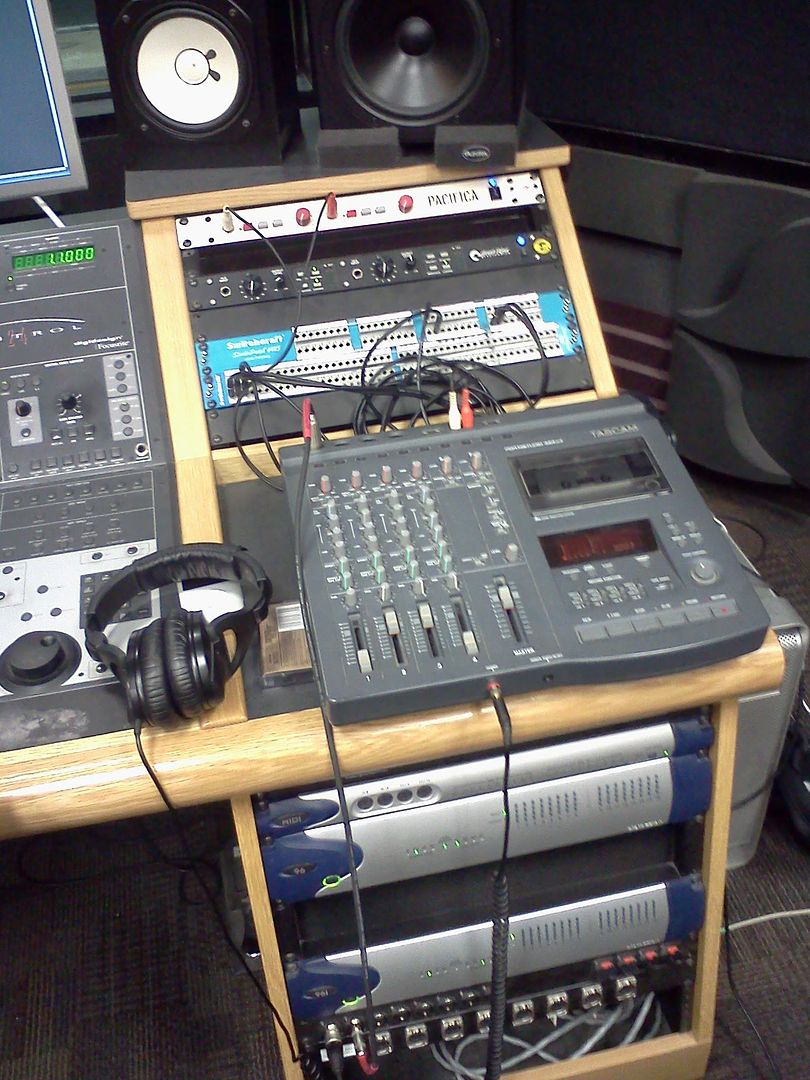MoreSpaceEcho wrote:another question for people who record metal: can you talk about your approach to rhythm guitars? are you typically eqing at the board/itb or are you able to go with the eq on the amp? what sort of compression, if any, is necessary? i'm guessing there can be pretty big dynamic swings between the palm muted stuff and the chordy bits? is cabinet resonance problematic? how many tracks do you like to do and how do you typically arrange them in the mix?
what about bass? metal bass always sounds pretty scooped, these days anyway. are you generally cutting that an octave down from the guitars? like guitars are scooped between 400-800 and bass between 200-400?
I've recorded a few metal bands lately, including one this past weekend (not that I'm claiming to be a huge expert, just sharing my experience). My approach for the guitars wasn't really any different than for any other style. The guys came in with their own (huge) amps - a Sunn and a Mesa. The guys had really spent time on their own getting gear that really sounds how they want it in the room, and also meshes with the rest of the band's equipment. Because of this, it was a piece of cake to record. We put up an SM7, SM57, Sennheiser 441 and 421, along with an MXL 603 as a room mic. By combining the 441, the SM7, and the 603, we got a sound that was really close to how it sounded in the room. EQ-wise I cut bit around 200hz and lower with a shelf, and I did bring up the high end a very small amount too so they had a bit more clarity to balance with all the "heaviness" of the low/mids. I didn't use any compression going in, but in mixing I put just a bit of compression on both rhythm guitars separately, to give a little sustain in some parts that needed it. There's definitely a difference between chugging and chord parts (and this band switched a LOT), but in my experience it's only ever a problem in the low end, so adding that bit of a shelf was enough that it wasn't an issue. We didn't have any issues with cab resonance, and I've never had any trouble with it before. The band, who had two guitar players including the singer, wanted their guitars separately hard panned. No doubling, just one player's guitars on one side and one on the other. That's actually my personal favorite way to go, though originally I tried hard panning one mic of each guitar, then putting the room mics a bit toward the opposite side, and the other close mics center. This gave things a pretty thick, spread out sound, which worked equally well, we just went the other way with it.
Bass in metal, what an interesting thing! The rig the guy brought this weekend was as close to how a bass in a metal mix sounds when finished as I've ever heard. It was a 300W Ampeg SVT (which blew one of my mic pres!). HUGE low end, but a crazy amount of high end, which is key. I haven't really needed any EQ in the mix. A bit of compression to balance out when the player slides up to those high notes and it just rings out like crazy. Mic-wise we tried a 57, D112, and MD421. We ended up using the 57 and D112 - the 57 filled the hole in frequencies that the scooped response of the D112 has. At that point everything sounded great, but while the high end was there, it was missing something up top. We put the same SDC - the MXL 603, as a room mic, and boom, there it was. The bass room mic was higher in the mix than it was for the guitars.
Mixing this band's music has taken less processing than anything I've ever mixed, which is amazing for metal. I've recorded other bands and have to spend a LOT of time working with high end in bass and guitars to make things sound present and clear without being fizzy. And the reverse with low end - heavy but not muddy. It can be a treat or a disaster!



